Stan Garfield's Blog, page 8
September 27, 2024
Knowledge Management Thought Leader 87: Bill Kaplan

Bill Kaplan is the Founder of Working KnowledgeCSP, an independent knowledge management consulting company.
CSP stands for Concept | Strategy | Practice. After a 25-year USAF career, Bill served as the Chief Knowledge Officer and Knowledge Management Practice Manager at Acquisition Solutions, Inc. (ASI), a public sector focused consulting company. He is the former Deputy Global KM Practice Manager at SAIC.
Bill is an independent knowledge management practitioner, consultant, coach, advisor, trainer, author, and speaker. His approach to KM is business-focused, non-academic, and practice-based. He focuses on creating value from knowledge throughout the workplace as part of the way work happens. This includes dealing with knowledge capture, sharing, and retention challenges by mitigating and preventing knowledge loss due to workforce turnover.

For more about Bill, see Profiles in Knowledge. He created the following content which I have curated to represent his contributions to the field.
Knowledge Management Books by Bill KaplanLosing Your Minds: Capturing, Retaining and Leveraging Organizational Knowledge
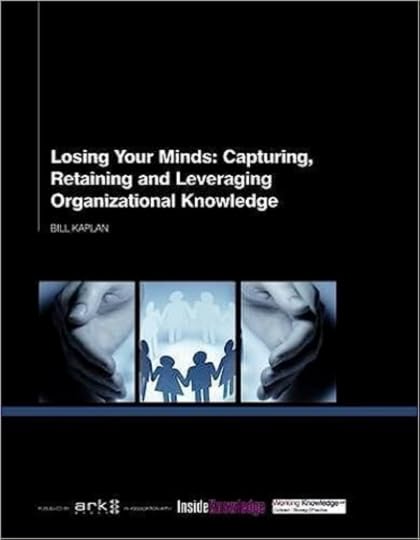
Gaining buy-in for KM edited by Laura Slater — Chapter 3: Knowledge accountability drives knowledge management success
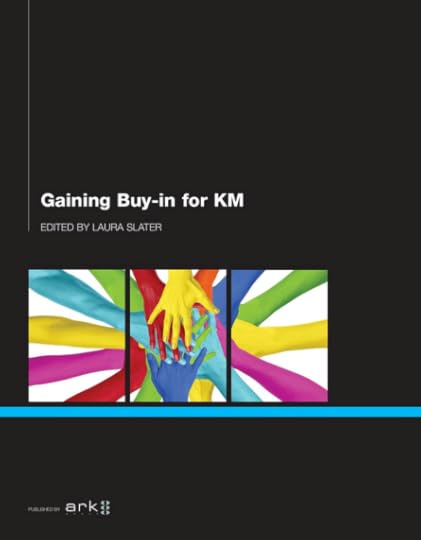 KM Tools and Techniques for Knowledge Capture, Transfer, and Reuse
KM Tools and Techniques for Knowledge Capture, Transfer, and ReuseThe following slide is featured in Bill’s presentation, “Managing the Risk of Knowledge Loss Due to Work Force Attrition,” for the National Association of State Procurement Officials’ 2008 Annual Conference.
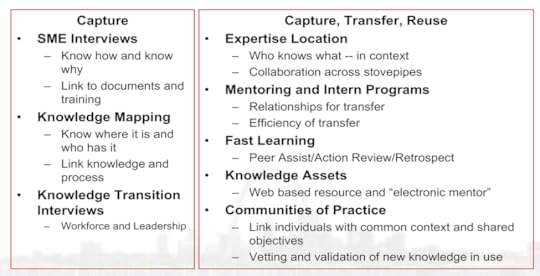 Basics for Success: Capture, Adapt, Transfer, Reuse
Basics for Success: Capture, Adapt, Transfer, ReuseOrganizations that are successful in sustaining their investment in their ability to successfully capture, adapt, transfer, and reuse “what they know about what they do” understand the following six factors:
There is long-term value in capturing and reusing knowledge and how and where it can be applied. It’s about continuously improving performance!It takes long-term commitment to build and sustain a knowledge enabled organization.Knowledge capture and reuse must be a routine part of the way work is accomplished.Start to socialize the value of effective knowledge capture and reuse practices where it will have a significant impact on performance that can be broadly seen, communicated, and transferred — pick a pilot project to demonstrate the value of this thinking and the supporting practices.Focus on the people and the processes necessary to move knowledge across your workforce — not the technology. It’s about changing behavior!Effective connecting and collaborating behavior generally aligns with the multi-generational nature of the workforce.3 Assumptions That Might Be Sabotaging Your KM Efforts1. Assuming that your organization understands what you mean when you say “knowledge management.”
Do you understand what the organization “sees” when they hear “knowledge management?” … technology, collaboration platform, search, information management…?2. Assuming you know how knowledge management should best be implemented because you have prior experience in implementing KM.
Ensure you clearly understand both the business and operational environment and the KM environment in your current organization. Concepts and practices previously employed may be similar — but context is everything…as are timing and available resources.3. Assuming that your organization does not understand the value of knowledge management like you (think you) do because the organization is not jumping on the “obvious” value of KM.
Part 1: Not everything you believe is valuable or important has the same sense of urgency you believe you see. Your view may be narrowly focused on a specific problem or challenge, but in fact, what you see as a problem or challenge may be part of a larger more complex challenge with other moving parts of which KM is one part.Part 2: Is there an evidence-based business case for KM with measurable outcomes to gauge success? Engage-engage-engage at all levels of your organization.[image error]September 20, 2024
Knowledge Management Thought Leader 86: Murray Jennex

Murray Jennex is Editor in Chief of the International Journal of Knowledge Management and President of the Foundation for Knowledge Management (LLC). He also teaches at West Texas A&M University and is the author of over 150 journal articles, book chapters, and conference proceedings.
Murray specializes in (knowledge management, crisis response, system analysis and design, IS security, project management, e-commerce, and organizational effectiveness. He serves as the Knowledge Systems Track co-chair at the Hawaii International Conference on System Sciences (HICSS).
Murray created the following content which I have curated to represent his contributions to the field.

For more about Murray, see Profiles in Knowledge.
Books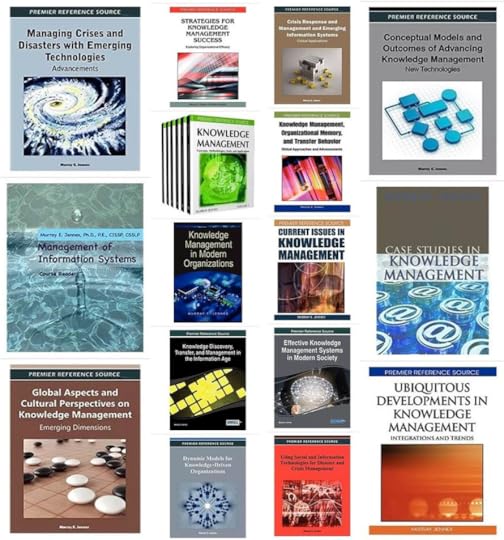 Knowledge Management/Knowledge Management System (KMS) Critical Success Factors
Knowledge Management/Knowledge Management System (KMS) Critical Success FactorsThe following is an excerpt from a conference paper titled Towards Measuring Knowledge Management Success, which was authored by Murray Jennex, Stefan Smolnik, and David Croasdell:
A knowledge strategy that identifies users, sources, processes, storage strategy, knowledge, and links to knowledge for the KMS;Motivation and commitment of users, including incentives and training;Integrated technical infrastructure, including networks, databases/repositories, computers, software, and KMS experts;An organizational culture and structure that supports learning and the sharing and use of knowledge;A common enterprise-wide knowledge structure that is clearly articulated and easily understood;Senior management support, including allocation of resources, leadership, and training;Learning organization;The KMS has a clear goal and purpose;Measures are established to assess the impacts of the KMS and the use of knowledge, as well as verification that the right knowledge is being captured;The search, retrieval, and visualization functions of the KMS support facilitated use of knowledge;Work processes are designed that incorporate knowledge capture and use; andKnowledge is secured / protected.Knowledge Systems ArchitectureThe following is an excerpt from a conference paper titled Knowledge, Innovation, and Entrepreneurial Systems at HICSS, which was authored by Murray Jennex, Sven Dittes, Stefan Smolnik, David Croaswell, and David King.
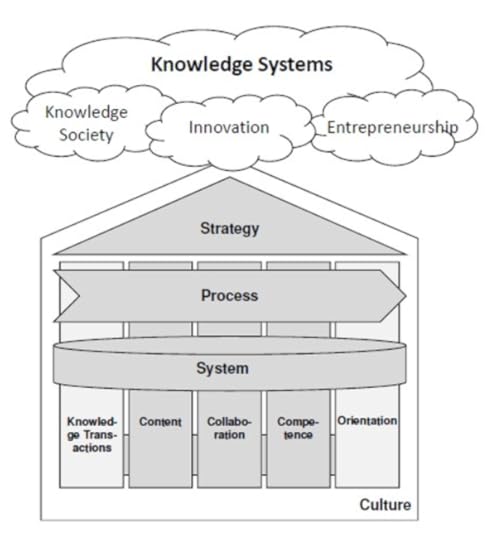
The strategy layer comprises the business/organization strategy, the knowledge strategy and goals, and the measurement system. Management expects that the business/organization and knowledge strategies are aligned, which means that the organization has identified how and what knowledge is needed to support the latter. The measurement system identifies metrics that monitor the progress of the KM/knowledge processes (which we describe next) and links these metrics to key performance indicators (KPIs) for the business/organization strategy; the system uses both the metrics and KPIs to measure the effectiveness of knowledge use. This layer also focuses on determining, describing, and measuring knowledge system value generation.
The process layer comprises the knowledge system’s business, support, and knowledge processes. These processes focus on the knowledge identification, capture, search, retrieval, modification, and application processes that specifically support the strategy layer. These processes differ from those in the pillars in that they are integrated processes that use technology, culture, context; focus on the use of knowledge in the organization; and include reporting and measurement processes.
The system layer comprises the information system/technology aspects of the knowledge system. This layer describes the specific technologies that support data acquisition and storage (such as big data, the Internet of things, cloud, KM, and social media). It also includes interface technologies such as portals, mobile devices, wearables, and visualization technologies. Additionally, it includes sensemaking technologies such as data warehouses, data mining, text mining, and web mining. Finally, the layer describes any other technologies used in knowledge systems.
Five functional pillars — content, collaboration, competence, orientation, and knowledge transactions — support the three knowledge system layers:
Content refers to the management of structured and unstructured data, information, and knowledge objects, the context of these objects, and the management of content itself with respect to lifecycle, quality, and attribution.Collaboration refers to the identification, exchange, development, and use of knowledge. It also includes technologies and processes that support and manage small and large group collaboration.Competence refers to the skill sets and individual and collective competencies in an organization needed to support the knowledge system.Orientation refers to the vision, design, review and management processes, and blueprint/plan/standards used to architect and integrate the knowledge system.Knowledge transactions refer to the interactions between the knowledge base and users. Transactions include security/protection of the actual transactions plus the design of the flow, content, format, and access requirements for the transactions.The culture layer reflects the organizational and/or national culture(s) of the users and designers of the knowledge system. The culture layer is the bottom layer because culture forms the analytical/interpretation, ethical, and application lenses that influence how the users and designers of the knowledge system view and will use the knowledge in the system. No knowledge system can succeed without incorporating understanding and applying the cultural norms of its users and designers.
The Knowledge Management/Organizational Memory/Organizational Learning ModelThe following passage is from a chapter in Jennex’s book Knowledge Management in Modern Organizations.
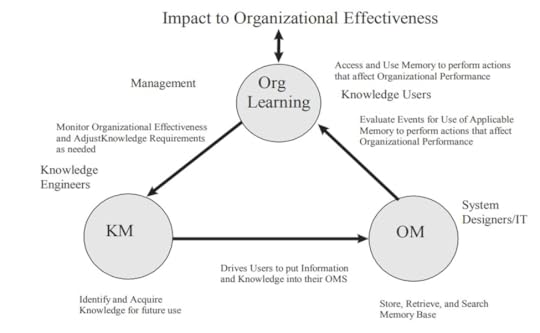
A better understanding of KM is obtained by incorporating the concepts of organizational memory (OM) and organizational learning (OL). The three areas are related and have an impact on organizational effectiveness. Organizational effectiveness is how well the organization does those activities critical to producing what the organization sells. OL is the process the organization uses to learn how to do these activities better. OL results when users utilize knowledge. That OL may not always have a positive effect is examined by the monitoring of organizational effectiveness. Effectiveness can improve, get worse, or remain the same. How effectiveness changes influences the feedback provided to the organization using the knowledge. KM and OM are the processes used to identify and capture critical knowledge. Knowledge workers and their organizations “do” KM; they identify key knowledge artifacts for retention and establish processes for capturing it. OM is what IT support organizations do; they provide the infrastructure and support for storing, searching, and retrieving knowledge artifacts.
[image error]September 19, 2024
Clyde Holsapple: Profiles in Knowledge

This is the 107th article in the Profiles in Knowledge series featuring thought leaders in knowledge management. Clyde Holsapple is Endowed Chair Emeritus and Professor Emeritus at the University of Kentucky. He is a Fellow of the Decision Sciences Institute and a senior member of the Association for Computing Machinery.
Clyde has written over a dozen books and over 150 journal articles across many disciplines. He served as Editor-in-Chief of the Journal of Organizational Computing and Electronic Commerce, Senior Editor of Information Systems Research; Area Editor of both Decision Support Systems and the INFORMS Journal on Computing; and Associate Editor of both Management Science and Decision Sciences.
Background EducationPurdue UniversityDaniels School of Business — PhD, Information Systems, 1975–1977MSc, Computer Science, 1973–1975BS, Mathematics, 1968–1972ExperienceUniversity of Kentucky — Rosenthal Endowed Chair in Management Information Systems, 1988–2017Purdue University — Professor, 1985–1989University of Illinois Urbana-Champaign — Associate Professor, 1978–1981ProfilesLinkedInCVAmazonResearch.comContentGoogle ScholarResearchGateAcademia.eduSemantic ScholarIGI GlobalSpringerdblpIEEEArticlesAn investigation of factors that influence the management of knowledge in organizationsA formal knowledge management ontology: Conduct, activities, resources, and influencesA Resource-Based Perspective on Information Technology, Knowledge Management, and Firm PerformanceKnowledge Shared is Power: Utilizing Knowledge Management Activities to Replicate Lean Sigma Best PracticesThe inseparability of modern knowledge management and computer‐based technologyDoes Knowledge Management Matter? The Empirical Evidence from Market-Based ValuationDoes Knowledge Management Pay Off?
EducationPurdue UniversityDaniels School of Business — PhD, Information Systems, 1975–1977MSc, Computer Science, 1973–1975BS, Mathematics, 1968–1972ExperienceUniversity of Kentucky — Rosenthal Endowed Chair in Management Information Systems, 1988–2017Purdue University — Professor, 1985–1989University of Illinois Urbana-Champaign — Associate Professor, 1978–1981ProfilesLinkedInCVAmazonResearch.comContentGoogle ScholarResearchGateAcademia.eduSemantic ScholarIGI GlobalSpringerdblpIEEEArticlesAn investigation of factors that influence the management of knowledge in organizationsA formal knowledge management ontology: Conduct, activities, resources, and influencesA Resource-Based Perspective on Information Technology, Knowledge Management, and Firm PerformanceKnowledge Shared is Power: Utilizing Knowledge Management Activities to Replicate Lean Sigma Best PracticesThe inseparability of modern knowledge management and computer‐based technologyDoes Knowledge Management Matter? The Empirical Evidence from Market-Based ValuationDoes Knowledge Management Pay Off?Implications for Managers
By establishing the link between KM performance and firm performance, this study serves to inform business managers that firms should do much more than merely have some form of KM practice. They should develop a clear strategy to make their KM performance superior. Previous research and real-world examples suggest that achieving such a superior performance is complex and requires time and effort.
Although there is little well-developed guidance for managers on how to achieve superior KM performance, an increasing number of studies have begun to address this issue. For example, the knowledge chain theory identifies nine classes of activity that a firm can focus on as it strives for competitiveness via increased productivity, agility, innovation, and/or reputation. Extensions to this theory find over sixty distinct types of knowledge management activity that belong to the nine basic classes.
An important step toward achieving superior KM performance is self-assessment, which requires a firm to assess its own strengths and weaknesses. To effectively measure and appraise a firm’s KM performance, managers must look broadly and deeply at its knowledge, knowledge processors, and knowledge processes.
Knowledge Management: A Threefold Framework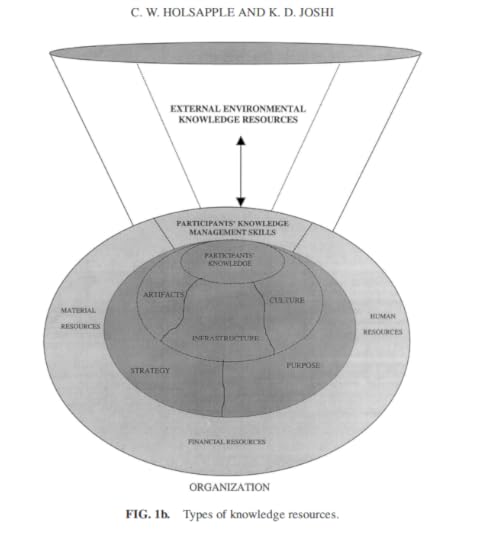
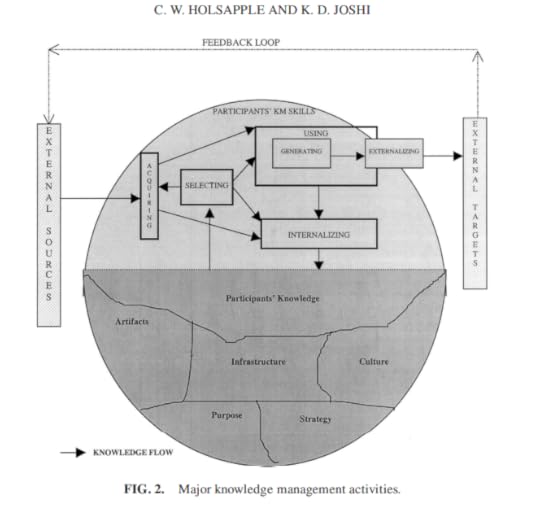
 Description and Analysis of Existing Knowledge Management Frameworks
Description and Analysis of Existing Knowledge Management Frameworks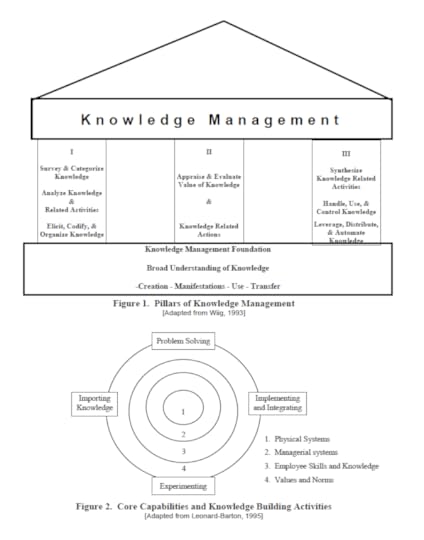
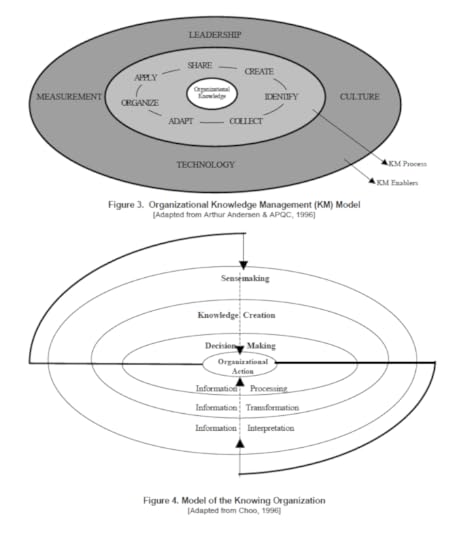

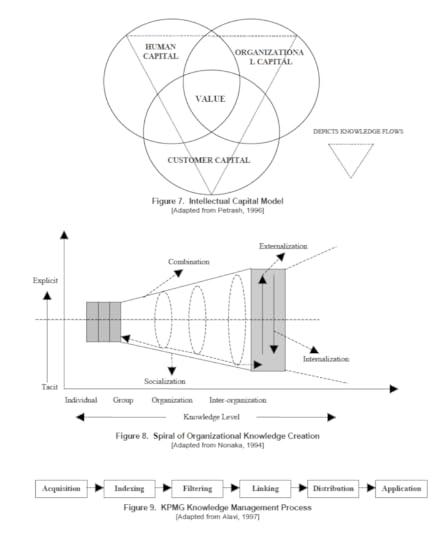 Toward an Elaboration of the Knowledge Chain Model
Toward an Elaboration of the Knowledge Chain Model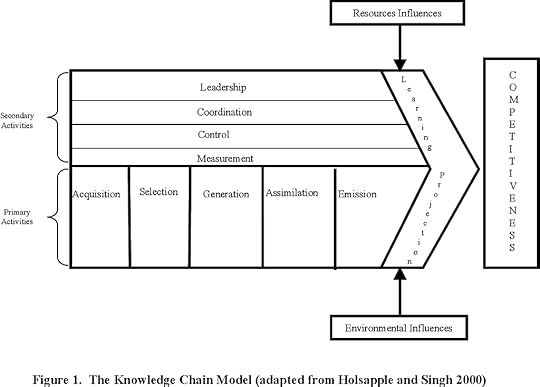
Primary Activities
Knowledge acquisition begins with identifying knowledge in the organization’s external environment and concludes with transforming it into a representation that can be employed by the organization. Sub-activities involved in knowledge acquisition include identifying appropriate knowledge from external sources, capturing the identified knowledge from the external sources, and transferring the organized knowledge to a processor that either immediately uses it or internalizes it within the organization for subsequent use.
Knowledge selection is the counterpart to knowledge acquisition. Knowledge selection refers to the activity of identifying needed knowledge within an organization’s existing knowledge resources and providing it in an appropriate representation to an activity that needs it. Sub-activities involved in knowledge selection include identifying appropriate knowledge within the organization’s existing knowledge resources, capturing the identified knowledge from internal sources, and transferring the organized knowledge to a processor that immediately uses it or internalizes it within the organization for subsequent use.
Knowledge generation refers to the activity of producing knowledge by discovering or deriving it from existing knowledge. Sub[1]activities involved in knowledge generation include monitoring the organization’s knowledge resources and the external environment by invoking selection and/or acquisition activities as needed, producing knowledge from a base of existing knowledge, and transferring the produced knowledge for externalization and/or internalization.
Knowledge assimilation (originally termed internalization) refers to the activity that involves storage and/or distribution of acquired, selected, or generated knowledge within the organization. Sub-activities involved in knowledge assimilation include assessing knowledge to be internalized, structuring knowledge to be conveyed into representations appropriate for the targeted resources, and delivering the knowledge representations to targeted knowledge resources.
Knowledge emission (originally termed externalization) is an activity that uses existing knowledge to produce organizational outputs for release into the environment. Sub-activities involved in knowledge emission include producing the output by applying, embodying, controlling, and leveraging existing knowledge to produce the output for the target, and transferring the output by packaging and delivering the projections that have been produced for targets in the environment (Joshi 1998).
Secondary Activities
Knowledge measurement is an activity that involves the assessment of knowledge resources, knowledge processors, and knowledge manipulation activities. It is a basis for evaluation of control, coordination, and leadership; for assessing and comparing the execution of KM activities; and for evaluating the impacts of an organization’s conduct of KM on bottom-line performance.
Knowledge control is concerned with ensuring that needed knowledge resources and processors (including human and/or computer based processors) are available in sufficient quantity and quality subject to constraints and required protection. Controlling the quality of knowledge is a significant issue for KM, because the value of knowledge and returns achieved from knowledge resources depend on its quality. Protection involves protection from loss, obsolescence, unauthorized exposure, unauthorized modification, and erroneous assimilation.
Knowledge coordination refers to guiding the conduct of KM in an organization. It involves managing dependencies among knowledge resources, among knowledge manipulation activities, between knowledge resources and other resources (i.e., financial, human, and material), and between knowledge resources and KM activities.
Knowledge leadership is an activity that establishes enabling conditions for a fruitful KM. It qualifies the expression of each primary activity. In short, leadership establishes enabling conditions for achieving fruitful KM through the other eight activities. The distinguishing characteristic of leadership is that of being a catalyst through such traits as inspiring, mentoring, setting examples, engendering trust and respect, instilling a cohesive and creative culture, establishing a vision, listening, learning, teaching, and knowledge sharing.
Content by Otherse-Interview by Dan PowerKnowledge and Its Attributes by Eric Havens, Sanusha Matthews, and Mike CopciacBooks1. Handbook on Knowledge Management 1: Knowledge Matters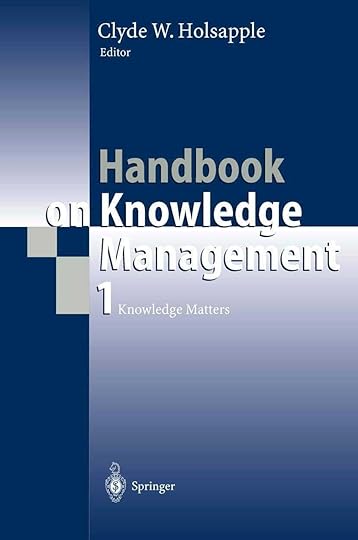 Table of ContentsChapter 6: A Knowledge Management Ontology with K. D. JoshiChapter 9: Knowledge and Its Attributes2. Handbook on Knowledge Management 2: Knowledge Directions
Table of ContentsChapter 6: A Knowledge Management Ontology with K. D. JoshiChapter 9: Knowledge and Its Attributes2. Handbook on Knowledge Management 2: Knowledge Directions Table of ContentsChapter 43: The Knowledge Chain Model: Activities for Competitiveness with Meenu SinghChapter 64: The Convergence of Electronic Business and Knowledge Management with Meenu Singh3. Business Expert Systems with Andrew Whinston
Table of ContentsChapter 43: The Knowledge Chain Model: Activities for Competitiveness with Meenu SinghChapter 64: The Convergence of Electronic Business and Knowledge Management with Meenu Singh3. Business Expert Systems with Andrew Whinston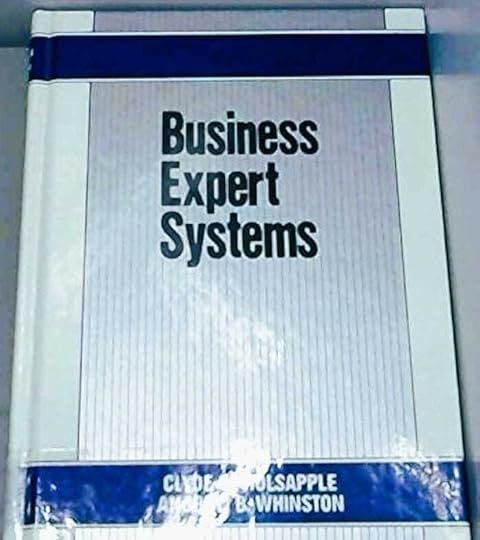 Book Chapters
Book Chapters1. Encyclopedia of Knowledge Management, Second Edition
Chapter 68 Preview — Knowledge Management OntologyChapter 73 Preview — Knowledge Management Strategy Formation2. Business Information Systems: Concepts, Methodologies, Tools and Applications
Chapter 103 Preview — A Resource-Based Perspective on Information Technology, Knowledge Management, and Firm Performance3. Successes and Failures of Knowledge Management
Chapter 1: Parameters of knowledge management success4. Knowledge Management in Modern Organizations
Chapter 5: Linking Knowledge to Competitiveness: Knowledge Chain Evidence and Extensions5. Knowledge Management: Concepts, Methodologies, Tools, and Applications
Chapter 29: Social Capital Knowledge6. Knowledge Management Systems: Theory and Practice
Chapter 14: Understanding Knowledge Management Solutions: The Evolution of Knowledge Management Frameworks7. Knowledge Management Handbook
Chapter 7: Knowledge Selection: Concepts, Issues, and Technologies8. Knowledge Management and Competitive Advantage: Issues and Potential Solutions
Chapter 1: Reactive and Proactive Dynamic Capabilities: Using the Knowledge Chain Theory of Competitiveness [image error]
[image error]
September 13, 2024
Knowledge Management Thought Leader 85: Harold Jarche
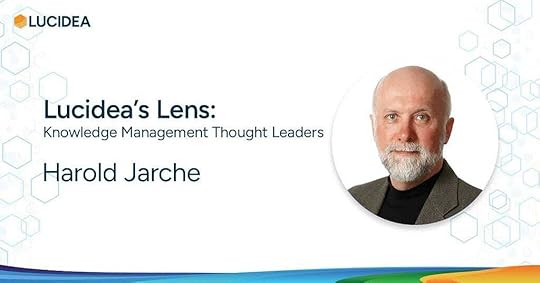
Harold Jarche (pronounced jar-key) is an international consultant, blogger, and speaker, helping people and businesses adapt to the network era.
Harold provides pragmatic guidance on connected leadership, social learning, personal knowledge mastery, and workplace collaboration. He is Principal at Jarche Consulting and a partner in the Internet Time Alliance.
Harold consults with organizations to adapt to the many challenges facing us today by focusing on collaboration, knowledge sharing, and sensemaking in networks. His personal knowledge mastery framework provides professionals with practical methods to connect work and learning.

For more about Harold, see Profiles in Knowledge.
Books The Seek > Sense > Share FrameworkSeeking is finding things out and keeping up to date. Building a network of colleagues is helpful in this regard. It not only allows us to “pull” information, but also have it “pushed” to us by trusted sources. Good curators are valued members of knowledge networks.Sensing is how we personalize information and use it. Sensing includes reflection and putting into practice what we have learned. Often it requires experimentation, as we learn best by doing.Sharing includes exchanging resources, ideas, and experiences with our networks as well as collaborating with our colleagues.
The Seek > Sense > Share FrameworkSeeking is finding things out and keeping up to date. Building a network of colleagues is helpful in this regard. It not only allows us to “pull” information, but also have it “pushed” to us by trusted sources. Good curators are valued members of knowledge networks.Sensing is how we personalize information and use it. Sensing includes reflection and putting into practice what we have learned. Often it requires experimentation, as we learn best by doing.Sharing includes exchanging resources, ideas, and experiences with our networks as well as collaborating with our colleagues.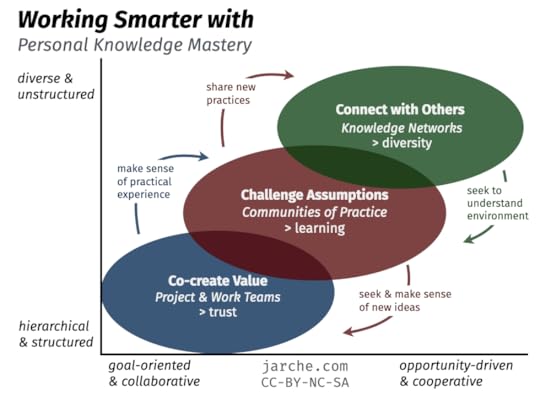 Rebuilding Trust
Rebuilding TrustEach of us has to find out how we can become knowledge catalysts in a liquid world, helping to make our networks smarter, more resilient, and able to make better decisions. How do we rebuild trust? One catalyst at a time.
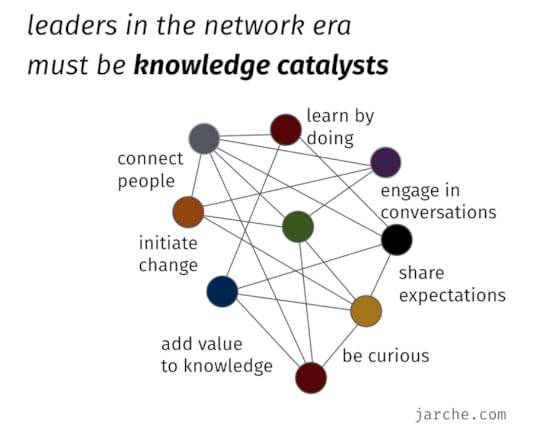 Personal Knowledge Mastery Roles
Personal Knowledge Mastery RolesPersonal knowledge mastery is a set of processes, individually constructed, to help each of us make sense of our world and work more effectively. PKM keeps us afloat in a sea of information — guided by professional communities and buoyed by social networks.
 [image error]
[image error]
September 5, 2024
Knowledge Management Thought Leader 84: Bill Ives

The late Bill Ives was one of the earliest and most prolific bloggers writing about knowledge management, Web 2.0, and social media every weekday.
On the weekends, he wrote about food, music, and art. Bill specialized in business uses of Enterprise 2.0 tools, knowledge management, employee portals, performance support, learning, workforce performance strategy, and social business.
Bill began his career as a research psychologist at Harvard looking at the effects of media on cognition. He then spent over 25 years in business consulting covering learning, knowledge management, and portals. He was the former Knowledge Management Practice Lead for Accenture.

For more about Bill, see Profiles in Knowledge.
Book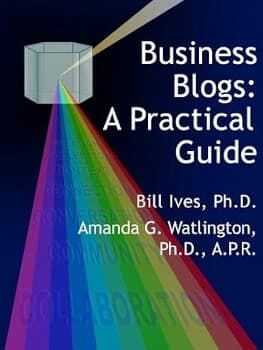 Portals and KM: Beware: BYOA May Rival BYOD as IT Issue
Portals and KM: Beware: BYOA May Rival BYOD as IT IssueThere has been a lot of discussion about the BYOD movement (Bring Your Own Device) where people are getting their own smart phone and/or tablet. Well, I think the complementary to that may be just as big. This opinion is not based on any research, just a number of conversations I have had recently. Now I am certainly not claiming to be the first to raise the issue of people bypassing IT to use apps from the consumer Web or elsewhere, I am just suggesting a label to help focus the issue and put it parallel to BYOD. I Googled it and did not find anything. So maybe you first heard the term here?
One example is when IT invests in an expensive document sharing system and employees use Google Docs on their own instead. Yammer got some of its early users this way. One problem becomes security, but another is the chaos that can result from the uncommon data structures of the different tools. I think IT and even business unit leaders need to be worried here. I could raise more difficulties than BYOD. However, just like BYOD, you cannot really legislate this away. Employees can vote with their digital “feet” if you do not give them the tools they want. The best solution is to involve employees in apps decisions and deployments. This has always been a best practice, but it is even more important now.
Big-Time BloggingBlogs and content aggregators are lead players in a new generation of tools that promise greater ability to create, distribute, and access Web content. The two also happen to have a symbiotic relationship: Blogs make content creation more accessible, and aggregators give greater control to readers of the ongoing proliferation of Web-based content. These tools are gaining attention in the media and the marketplace and hold great promise to transform the way the Web works. They are also starting to make inroads within corporations as collaborative and content management tools that can be used in conjunction with existing systems or as replacements.
Blogs have been around in some form or another since the birth of the Web. When the first blog-specific tools were introduced in 1999, only a few blogs existed. A year ago there were about 300,000, and now there are more than 3 million. Blogs have passed the tipping point, with Technorati reporting that about 15,000 new ones pop up every weekday. Celebrities and politicians are blogging, and Forbes magazine now rates the top blogs in multiple categories. Organizers of the Democratic National Convention issued press credentials to bloggers, and at press time the Republicans were considering the possibility.
Blogs are taking hold within corporations as well, especially in the technology sector. Microsoft employees have created more than 700 of them to facilitate communications with customers outside the firewall. IBM developed Blog Central to enable its employees to create blogs inside the firewall, and thousands have responded. Some IBM employees even have separate blogs for each side of the firewall.
Blogs are both a technology and a way of communicating. On the one hand, they are nothing more than simple Web sites, often published in the form of a journal, that provide original content, links to other relevant content, simple editing features, comment capability, archiving, search, and security options. This ease of use provides a vehicle for the writer’s unedited personal voice, which is considered a defining aspect of blogs. While many uses beyond personal journalism have emerged, the individual voice remains a central characteristic, even in the corporate setting.
Blogs also can enable a greatly enhanced personal knowledge management system for individual employees. In many large organizations there is an official enterprise document repository. However, the so-called good stuff is often on the individual hard drives of thousands of employees, and so is inaccessible to others. Just as blogs can bring a personal touch to customer communications, blog-based personalized content management could provide employees with what they really want: the best content from respected colleagues, complete with context.
Building BloggersThough the potential of blogs and aggregators is tremendous, these tools don’t make sense for every organization, particularly those in which central control over content is a major concern. For now, they are best suited for companies or institutions where innovation is a goal, and the serendipitous discovery of information is desired. Blogs and aggregators can also work well in situations where information needs to be distributed, commented upon, searched, and made easily available for later use; email, instant messaging, and standard Web sites do not allow for this combination of capabilities.
For businesses or divisions in which community building is an objective, such as developer networks, cross-functional collaboration teams, research groups, or customer user groups, blogging tools deliver ideal capabilities. By the same token, individual and group control must be acceptable, and even desired, for blogging to work in a corporate setting. In addition, the personal voice must be seen as a good thing, whether to form a more direct connection to customers or to allow for more meaningful discussions within the firewall.
Blogs and aggregators are also easy to integrate with existing portals. Because blogs publish their content in XML as an RSS feed, components can be easily placed within a portal to display recent content from a selection of blogs. Because they are published as Web pages, blogs can be searched using standard tools. However, to encourage the personal tone of blogs, those belonging to individuals should be differentiated from corporate content systems with extensive editorial monitoring and control. The opportunity and responsibility this provides is a crucial motivator for the effective use of blogs by employees.
What Blogs and Wikis Bring to Bring to Business and KM
 [image error]
[image error]
August 30, 2024
What to Look for in Knowledge Management Software

In my experience, knowledge managers are interested in KM platforms that enable critical business activities, rather than software that just offers generic features and functions.
In this post I will describe ideal KM software that enables people to capture, curate, connect, collaborate, create, and communicate effectively. In doing so, I added a sixth “C” — communicate — to the five that I wrote about in my book, The Five Cs of KM.
At its core, knowledge management software should support the five core activities of KM: sharing, innovating, reusing, collaborating, and learning:
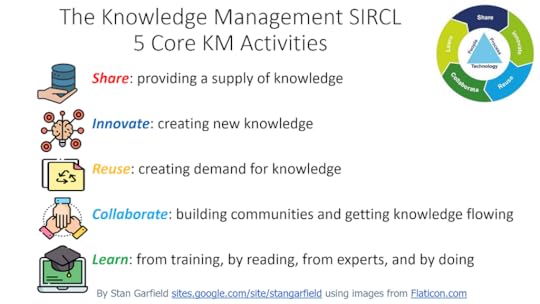
Source: Knowledge Nuggets:100 KM Infographics
Building on this core, here are details on how a KM system should support each of the six Cs.
Capture
Knowledge capture includes collecting documents, presentations, spreadsheets, records, processes, software source code, images, audio, video, and other files that can be used for innovation, reuse, and learning. To support knowledge capture, a KM tool should enable:
Contributing content to and retrieving it from knowledge repositories, knowledge bases, and structured lists. This should be easy to do via user-friendly interfaces.Integrating content from multiple internal and external sources. This should be done seamlessly and transparently.Populating and updating individual skills profiles to enable expertise location. This should include the capability to extract relevant information from HR databases, external sources, and knowledge sharing tools such as threaded discussions.Curate
Knowledge curation is taking existing information and making it more useful, including better organizing it, making it more findable, and making it easier to use. To curate is to collect, select, assemble, and present information or multimedia content for other people to use. To support knowledge curation, a KM system should enable:
Creating and editing content collections and FAQs, providing consolidated views of content, and delivering customized content via portals. This is for knowledge managers.Managing the full content lifecycle. This is for content managers.Modifying threaded discussions by adding and editing tags and merging, splitting, renaming, and removing threads. This is for community managers.Connect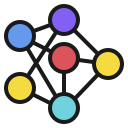
Connection is the essence of knowledge management. There are three types of connection that are important. These are people-to-people, people-to-content, and content-to-content. To support all three types, KM software should enable:
People to People : Communities of Practice and Enterprise Social Networks. People to Content : Enterprise Search and Federated Search. Content to Content : Enterprise Taxonomy, standard metadata application, and integration with other internal and external systems.Collaborate
Collaboration is interacting with peers and colleagues to exchange ideas, share experiences, work together on projects, and solve problems. To support collaboration, a KM platform should enable:
Team Spaces : Secure workspaces where business units and project teams can collaborate on their efforts. They allow teams to share documents, libraries, and schedules; conduct meetings, surveys, and polls; and store meeting minutes, discussions, reports, and plans. Threaded Discussions : Tools for carrying on conversations among members on a specific subject. They offer online and email posts and replies, searchable archives, and discussions grouped by threads to show the complete history on each topic. Wikis : Sites that allow users to easily add, remove, edit, and change most available content. They are effective for collaborative writing, self-service page creation, and shared maintenance of information. A wiki page can be edited by anyone, thus making it easy to collaborate on writing a document, creating a website, or collecting information on a topic.Create
Knowledge creation includes inventing and innovating new concepts, approaches, methods, techniques, products, services, and ideas that can be used for the benefit of people and organizations. To support knowledge creation, KM technology should enable:
Innovation Management: A vehicle for submitting, tracking, and processing suggestions and ideas, with the goal of acting on the best ones. This can be via specialized systems for collecting and managing ideas or using an Enterprise Social Network with special tagging.Standard Methodologies: Repeatable techniques and approaches that can be used to solve a problem or accomplish a desired result in a proven way. A process for practitioners who discover improved ways of doing things to convert their insights into new methodologies.Content Creation: A simple way to create and contribute white papers, presentations, podcasts, videos, and training modules. Gamification can be effective in motivating the creation of new content.Communicate
Communicating is conveying information and news updates to other people. This can be done using writing, images, audio, or video. To support communication, KM applications should enable:
Discovery: Publishing top-down vetted information and providing browsable directories. Syndication and Subscription : Providing content such that it can be subscribed to using an RSS (Really Simple Syndication) feed reader, integrated into a website as a subset of that site, or received as an email notification or application alert. Blogs : Posting articles or entries (as in a journal) displayed in reverse chronological order. Blog posts combine text, images, and links to other blogs and websites. They typically provide archives in calendar form, local search, syndication feeds, reader comment posting, trackback links from other blogs, blogroll links to other recommended blogs, and categories of posts tagged for retrieval by topic.[image error]August 23, 2024
Knowledge Management Thought Leader 83: John Hovell
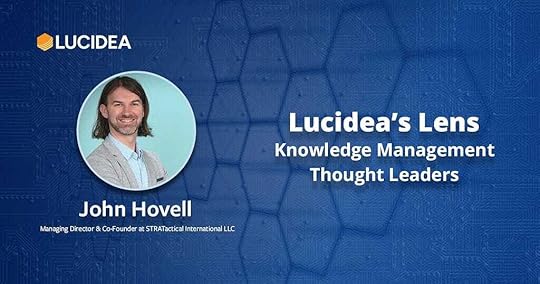
John Hovell is the Managing Director and co-founder of STRATactical, a consulting and training provider.
A leader in the convergence of Knowledge Management (KM) and Organization Development (OD), he is a practitioner, speaker, and author in OD/KM strategies and their application to current challenges.
John has expertise in knowledge management, knowledge transfer, knowledge retention, talent markets, communities of practice, project management, change management, organization development, diversity and inclusion, collaboration, social media, social business, agility, Conversational Leadership, and Working Out Loud. He is active in multiple KM and OD communities in the Washington, DC area. John is a frequent promoter of job openings in the KM field.

For more about John, see Profiles in Knowledge.
Book 3 Steps to Improve ConversationsPure listening: Truly listen to other people’s spoken words (and non-verbals) while simultaneously and separately holding your perception of those words. Be aware of the time and space for your interpretations of other people’s words and phrases.Continuous awareness: As you’re speaking, raise your own awareness for multiple interpretations of the words you speak (as well as your non-verbals). Be prepared for a range of responses so that you can maintain the optimal flow of the conversation.Maintain curiosity: Skillfully “check-in” to see and hear how your words (and non-verbals) were perceived by other people.Can Agile Get Along with Knowledge Management?
3 Steps to Improve ConversationsPure listening: Truly listen to other people’s spoken words (and non-verbals) while simultaneously and separately holding your perception of those words. Be aware of the time and space for your interpretations of other people’s words and phrases.Continuous awareness: As you’re speaking, raise your own awareness for multiple interpretations of the words you speak (as well as your non-verbals). Be prepared for a range of responses so that you can maintain the optimal flow of the conversation.Maintain curiosity: Skillfully “check-in” to see and hear how your words (and non-verbals) were perceived by other people.Can Agile Get Along with Knowledge Management?How could the partnership between agile and KM work?
Agile is looking to shift cultures from linear, hierarchical monoliths to iterative, self-organizing, need-responsive ecosystems. KM is looking to shift cultures from information/knowledge hoarding, knowledge is power, expertise/decision bottlenecks to unique and critical knowledge created/available in the moment/context it is needed.
Agile is looking to increase process efficacy by implementing well-known, well-tested processes. KM is looking to increase process efficacy by implementing KM processes such as communities of practice, talent markets, knowledge markets, even random coffee trials.
Agile uses software tools to document, communicate, and share progress. KM uses SharePoint, and every technology listed at superpowers and conversation prism to create new knowledge, share retain, and transfer knowledge, store, organize, apply, and evaluate knowledge. Both disciplines are looking to stimulate innovation, reduce feedback loops, and include people along the way.
Liberating Structures has emerged as a field related to both Agile and Knowledge Management. There are 35 well-defined and practiced processes within liberating structures. In addition to liberating structures (such as knowledge café, TRIZ, 1–2–4-all, etc.), I hear Communities of Practice and other KM practices being considered in agile discussions.
Key Points
Agile is much more than a series of ceremonies; KM is much more than sharing documents.KM is often confused with IM (Information Management), where KM leverages explicit and tacit knowledge.The Agile principles have beautiful overlap with KM principles.The Agile Manifesto might have been written using a KM mindset.Imagine if Agile and KM quite purposefully partnered together.Could “Conversational Leadership” Avert Deeply Troubling Times Ahead?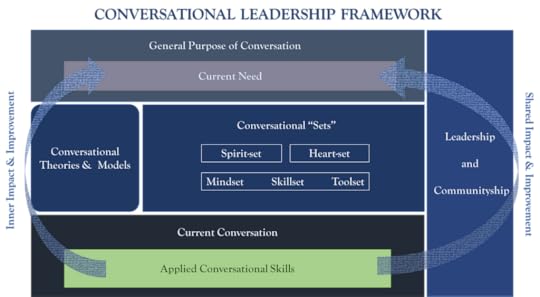
General Purpose of Conversation
In the top bar we see “General Purpose of Conversation” and “Current Need”. The general purpose of conversation can be highly debated, but in the case of Conversational Leadership, we’re referring to making sense of a highly complex and connected world. The general purpose of conversation from this perspective would be to partner and understand ourselves, each other, and our situation(s) through conversation. It is about enabling our best ability to act and improve.
The “Current Need” refers to your current needs in any active conversation that you’re having. It also refers to the needs of the other people in the conversation. Even more complex, it also refers to the needs of the entire group. Group needs are often different from individuals’ needs. As simple as it sounds, it can be quite difficult to be aware of your deepest needs in any given conversation. It can also be difficult to express your deepest needs in any conversation. For example, imagine you’re standing at a train station and the person next to you starts a conversation with you about the weather. Do you need to discuss the weather because that topic might begin to build trust and lead to the next topic. Or, do you need to have a personal conversation about a recent death in the family because that topic completely occupies your mind. As I learned in acting school, maybe it’s not only “needs” that are relevant, maybe it is “needs, wants and desires”. Then, it’s not only about the topic that’s being discussed, then it also becomes about “how” and “when” and “where” and many other facets of the conversation.
Imagine if we were all skilled at knowing the general purpose of conversation, and our current needs/wants/desires in this conversation, and how to express those needs/wants/desires. The two key questions in this area could be:
Are you having the conversation you need to be having right now?Are we having it in the way we need to be having it?Leadership and Communityship
Notice that there are 2 columns in this model. The left column is much wider than the right column. The left column focuses on “conversation”, while the right column focuses on “leadership”. The “Leadership and Communityship” is less fleshed out than the conversational column because many decades of work have been done in leadership. Henry Mintzberg coined the term “Communityship”, which if I understand it correctly, is attempting to say that maybe we need to augment individual leadership with group-level leadership which could be called “Communityship.”
Conversational Theories & Models
Underneath “General Purpose of Conversation” we see “Conversational Theories & Models.” There are dozens of well-received books/models that offer how to have certain kinds of conversations. For example, but not limited to, there are books on crucial conversations, healing conversations, deep conversations, non-violent communications, influencing, negotiating, etc. There are also quite helpful models such as polarity thinking/mapping that can serve to enable highly aware conversations. Conversational Leadership, at this point, simply aims to be a pointer to the many existing models that support improved conversational skills. Stay tuned to this area though, there is hope that the field itself could result in new conversational theories and models.
Conversational “Sets”
Next to theories & models, we see “Conversational Sets”. At first, we listed mindset, skillset and toolset, we later added John Hagel’s spirit-set and heart-set. Each one of these boxes again offers a list of pointers.
Conversational Mindset could include conversational beliefs and principles such as “everyone has an equal voice” and “time for feedback and collective sense-making”, etc. The idea is to be aware of the mindset you’re bringing into each conversation, and the patterns you have across all of your conversations.
Conversational Skillset includes your conversational behaviors and habits. For example, within your conversational skillset, what is your behavior for making time to reflect? What are your listening habits? The list of conversational behaviors and habits is quite extensive, so in Conversational Leadership we are working to raise awareness of your conversational behaviors/habits and their impact on yourself, others and the situation.
Conversational Toolset includes a long list of “tools” for designing conversations. For example, we could use a knowledge café design or an after-action review design for conversation. Liberating Structures is a related field that offers at least 30 different conversational designs. Conversational Leadership could have a Conversational Toolkit to include conversational processes and software that support conversation.
Above mindset, skillset, toolset, you’ll notice spirit-set and heart-set. Credit (and further detail) goes to John Hagel for these concepts. If I understand them correctly, these concepts are to remind us that mindset, skillset and toolset tend to come from the brain, whereas heart-set and spirit probably come from somewhere else. Maybe it is the difference between mind and brain, maybe it’s the difference between thinking and feeling, maybe it is something else. From a Conversational Leadership perspective, spirit-set and heart-set are intended to be reminders that our conversational spirit and our conversational heart/emotions are well worth being aware of, and potentially even bringing into the conversation.
Current Conversation
At the bottom of the conversational left column, we see “Current Conversation” and “Applied Conversational Skills”. This area is intended to remind us that Conversational Leadership can be applied in every conversation by every person at any given time. It is meant to be the real-time application of all the other areas of the Conversational Leadership framework. In other words, during a conversation, am I able to “see” the conversational design, the conversational process, my own needs, the general purpose of the conversation? Can I embed light structure or facilitation if and when necessary? Am I aware, and listening for, individual and group needs? What is being said in the conversation, what might be covertly being said or not said in the conversation that is impactful?This area of the framework is simply intended to be a reminder that Conversational Leadership is an applied discipline, it can be considered within every conversation.
Impact & Improvement Loops
You might notice the arrows on the far left and far right of the framework. These arrows are designed to remind us that every conversation has an impact on ourselves, on others and on our situation. If we approach conversations in a meaningful way, ready to learn and improve (not only the task and topic, but our conversational skills as well), then we can likely begin to live life in a conversational way. The hope and drive of Conversational Leadership is to connect with each other, make sense of our situations, and carry forward as best we can.
[image error]August 16, 2024
Knowledge Management Thought Leader 82: Morten Hansen

Morten Hansen’s research focuses on social networks, collaboration, knowledge management, and corporate innovation. He has published numerous articles in Harvard Business Review and in Sloan Management Review.
Morten is a management professor at University of California, Berkeley and a senior director at Apple. He is a former professor at Harvard Business School, a former professor at INSEAD (France), and a former manager at the Boston Consulting Group. He has published numerous articles in Harvard Business Review and in Sloan Management Review. He holds a PhD from Stanford Business School, where he was a Fulbright scholar. His academic research has won several prestigious awards, and Thinkers50 has ranked him one of the world’s most influential management thinkers.

For more about Morten, see Profiles in Knowledge.
Books What’s Your Strategy for Managing Knowledge? with Nitin Nohria and Thomas J. Tierney
What’s Your Strategy for Managing Knowledge? with Nitin Nohria and Thomas J. Tierney Getting Collaboration Right with Herminia Ibarra
Getting Collaboration Right with Herminia IbarraUnder-collaboration. Companies that operate as a collection of silos commit the cardinal sin of underperforming relative to the resources they have invested. Money is left on the table because managers are unwilling or unable to cross-sell their products and services, cross-pollinate resources to create new products, or share best practices to improve efficiency.
Over-collaboration. The alternative problem is that collaboration sometimes goes too far. It sets in when people collaborate on the wrong things or when collaboration efforts get bogged down in endless discussions and consensus decision-making in which no one is clearly accountable. The result is slow and poor execution.
Both traps are equally perilous: under-collaboration leads to underperformance relative to a company’s resources, and over-collaboration undermines speed and execution, also leading to poor results. Collaborating in the right way to reap the economic benefits and not fall prey to either extreme is clearly a very difficult balancing act.
So what’s the right way? Disciplined collaboration is one way to get this right. It requires managers to rigorously assess the business case for any collaboration effort, spot and tear down behavioral barriers to teamwork and set up the organization correctly by aligning incentives and promoting accountability.
Leaders play a crucial role in getting this right. They not only need to orchestrate the conditions for employees to collaborate on the rights things, but they also need to show a strong hand in guiding collaboration efforts.
How to Build Collaborative AdvantageBarriers to Collaboration
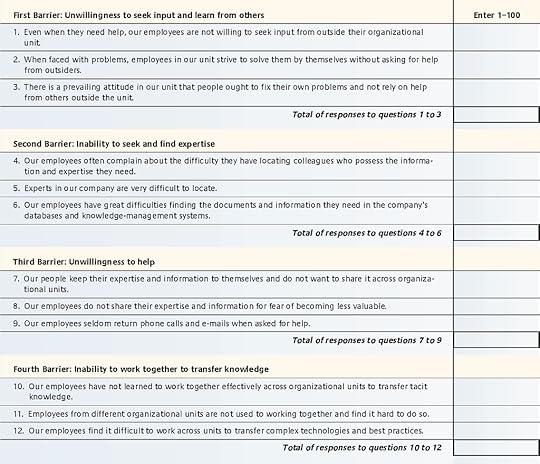 [image error]
[image error]
August 13, 2024
Debra Amidon: Profiles in Knowledge

This is the 106th article in the Profiles in Knowledge series featuring thought leaders in knowledge management. The late Debra Amidon (1946–2016) was the Founder and Chief Strategist of Entovation International, Ltd., a global innovation research and consulting network.
Debra’s specialties were Knowledge Innovation Zones (KIZ), P7 KIZ Blueprint, the E100 Network, the Triple Knowledge Lens. intellectual capital, global innovation strategy, stakeholder innovation, knowledge economics, economic sustainability, and collaborative advantage.
Debra was known among her peers as a management pioneer, philosopher, architect, and visionary. She captured the imagination of academic, government and industrial leaders around the world. With her seminal conference in 1987 on “Managing the Knowledge Assets into the 21st Century,” she set in motion what evolved into an expansive community of practice of theorists and practitioners from diverse functions, sectors, industries, and geographies.
Debra was Associate Director of External Research at Digital Equipment Corporation from 1981 to 1993. I didn’t know her when we both worked there, but I later interacted with her during AOK Star Series Dialogues. Debra passed away on August 13, 2016.
Background
Debra held degrees from Boston University, Columbia University, and the Massachusetts Institute of Technology as an Alfred P. Sloan Fellow. Having served as college administrator, government official, and corporate executive, Debra was a global expert on collaborative advantage providing an innovation foundation for economic sustainability. In 2015, she was awarded an Honorary PhD from Bangkok University in Thailand.
EducationMIT Sloan School of Management — M.S., Management — Global Innovation Strategy, 1988–1989Columbia University Teacher’s College — M.A., Higher Education Administration, 1968–1972Boston University — B.S., Education, 1964–1968ExperienceENTOVATION International Ltd. — Founder and CEO, 1993–2016Digital Equipment Corporation — Associate Director of External Research, 1981–1993Commonwealth of Massachusetts — Assistant Secretary of Higher Education, 1979–1980ProfilesFacebookLinkedInBiographical SketchDavid SkyrmeDEC ConnectionLucidea’s LensDigital Equipment Corporation (DEC): Profiles in KnowledgeQuotesWe need to manage the innovation environment — not leave it to serendipity. Managing is a function of creating the conditions where innovation can occur — where ideas flow efficiently into and within the system and are converted into viable products and services that create highest value.Innovation is NOT creativity. it is NOT R&D. It is NOT invention. I like the notion that we are experts at competing and need to learn how to effectively work with one another, building upon the competencies of one another.Knowledge strategy has ALWAYS been about innovation. Knowledge is the content (even though it resides in the human being) and innovation is the process whereby we put knowledge to work.Content1. DEC Connection PublicationsThe Digital Management Legacy: A Culture of Knowledge, Innovation and Collaborative AdvantageRoundtable on critical issues: Management of Knowledge Assets into the 21st Century2. PresentationsVision of KnowledgeInnovation SuperHighway - Vision of Knowledge - Regis2014
A Global Innovation Frontier3 Laws of Knowledge Dynamics
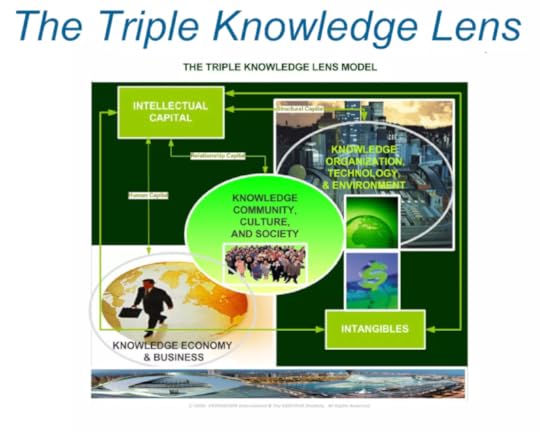
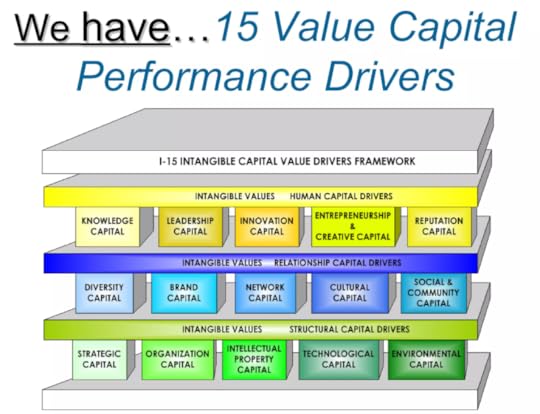 P7 KIZ Methodology
P7 KIZ Methodology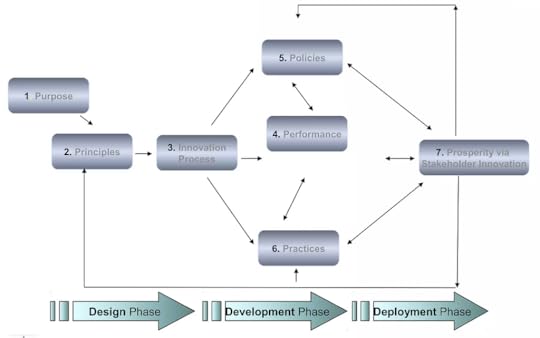 Conversations
Conversations1. AOK: Preparing for Conversations with Debra M. Amidon
Conversations with Debra M. Amidon: Architecting Success2. AOK: Preparing for Conversations with Bryan Davis and Debra Amidon
Summary: Conversations with Bryan Davis and Debra AmidonArchive: Conversations with Bryan Davis and Debra AmidonArticlesVisualizing Action: A Recipe for Boston Innovation Success with Oliver SchwabeGet in the zone with Bryan Elliot DavisInnovation — Interviewed by Pradip SinhaWhat according to you is Innovation?
For me, Innovation is the creation, evolution, exchange and application of new ideas into marketable goods and services, leading to the success of an enterprise, the vitality of a nation’s economy and the advancement of society. Innovation encompasses the full spectrum from idea creation to commercialization. Successful innovation depends on converting knowledge flows into marketable goods and services. An innovation strategy is similar to a road map. It outlines where an enterprise is to go and organizes the resources to get there. However, there is no perfect map, and measuring devices may be imperfect. A competitor may change the landscape before goals are reached. The key to developing an innovation strategy is looking at knowledge — especially new knowledge — as a resource. Innovation strategy, on the other hand, is a synthetic practice based on innovation and uncertainty.
The innovation process includes three phases: Invention, translation and commercialization. The first phase can focus upon creating something ‘new’ — usually considered an invention — or identifying something already known that might be reused or used in a new way. Both feed the innovation process. Both could be considered as part of the creation stage-knowledge creation.
The second stage of the process is the conversion process, where knowledge-sometimes in the form of technology-gets translated into production and manufacturing. At stage three, the knowledge — now in the form of some product or service — can be commercialized.
Further, we now need to look at innovation from the perspective of the flow of knowledge: How it is created, converted into products and services and commercialized for the benefit of a constituency. Innovation does not operate as a value chain. Instead, innovation operates as systems dynamic of interactions — across functions, business units, sectors, industries and geographies. Innovation applies in the profit and not-for-profit sectors of the economy. Academic institutions, government agencies and NGO’s must innovate just as commercial enterprises do.
Some people feel that Innovation and Creativity are very much interrelated. Do you think so?
Contrary to popular opinion, innovation is NOT creativity, although creativity is needed throughout the entire innovation value-system. Also misunderstood, innovation is NOT simply R&D; it requires the constant flow of knowledge from all functions and stakeholders. In fact, at least 60% of what is needed to make an enterprise successful is likely outside the company or even the geographic region. And the measurement of the number of patents, graduate degrees or communication lines is not necessarily an indication of innovation prowess. We need modern indicators to calibrate the value-added of innovation.
Innovation is more a sense of ‘ideas operationalized’ than the creation of the idea in the first place. Modern innovation includes how to manage the collaborative process across boundaries, measure intangible value and intellectual wealth, incubate new businesses, operate as a distributed network of expertise, position competitively with new forms of intelligence and use innovation technology to enable the whole process.
What role does Innovation play in a firm’s survival in this dynamic and competitive business world?
The progress and survival of any enterprise is dependent upon the success of its innovation capability. Innovation is the business, and the one competence required to ensure future success. It is that simple and that complex. But few enterprises — private or public — have a Chief Innovation Officer. Instead, they leave this critical process to serendipity. Innovation must be in the head, heart and hands of every participant in the system. It does not mean everyone is an expert technician and expert marketer at the same time. It does mean everyone has knowledge of the entire innovation system and their particular role. It does mean there is some common language and shared purpose, and the boundaries fade between functions, sectors, industries and cultures. It means there is a basic trust, mutual respect and collegial competencies. In addition, a thirst for learning pervades the culture. In the present scenario, the real challenge facing most companies is that of faster innovation. Creating the system within which ideas are created and applied is more than management. It is a matter of strategy and leadership.
Is Innovation a one-time affair or an on-going process?
Innovation is the constant ebb and flow of the firm; it is omnipresent. However, it is wise to plan certain events that can be managed within time periods for the influx of new ideas that can then be carefully and systematically incubated into new products and services.
Any other thoughts/views/personal experiences you would like to share with our readers?
We live in an era of ‘kaleidoscopic change’. It is not the speed of change of one variable or the speed of change of multiple variables challenging today’s management executives. It is the compounding effects of the speed of change of multiple variables creating a business landscape where old traditional policies and practices are not sufficient. Just as with a kaleidoscope, one may not know how the weight, shape or texture of pieces combines to form a new image. We do know is there is no turning back. Executives are challenged to manage enterprises in a world where the economic rules have changed, and the new ones have yet to be invented.
Innovation is the only emerging trend for a sustainable growth and economic development within cities, regions, countries and enterprises. Innovation encompasses the full spectrum from idea creation to commercialization and is the key to realizing the intangible value hidden in interactions between people, nations and societies.
One should always be open to change-being flexible, adaptive open to new ideas and willing to unlearn old ones are essential management qualities. Moreover, innovation is the implementation of effective change management. Innovation is essential to examine and disseminate the creation of fresh opportunities, profit from leading insights, and the tool of knowledge exchange and knowledge arbitrage. We have now entered into the innovation frontier. Intellectual capital, properly leveraged via innovation is the new currency that provides a different paradigm from previous agricultural, industrial or service economies. It is a currency that rests on the value of human potential and how it can be leveraged. The world is now our landscape and history will document our success.
7 Cs of Knowledge Leadership: Innovating our Future with Doug MacnamaraKnowledge Leadership is a Matter of Context. Leaders will understand the nature of complex context — how to make sense of it and how to convey it (with magnetic vision) to others.Knowledge Leadership is a Matter of Competence. Leaders will know that competencies are based in experience and are more dynamic than static attributes.Knowledge Leadership is a Matter of Culture. Leaders will know the relationship between the motivation (Psychology) of an individual and the culture (Sociology) of an organization. They will value heritage (Anthropology) and know that more than 2% of manager time need be dedicated to visioning — the lifeblood of a future generation business.Knowledge Leadership is a Matter of Communities. Leaders will understand the value of the collective — the teams and communities within whom work gets done and visions are realized.Knowledge Leadership is a Matter of Conversations and Common Language. Leaders will know how to evolve a common language and that there is more power in the dialogue than what gets documented in a particular planning process.Knowledge Leadership is a Matter of Communications. Leaders will value the communications process — both technical and human — but not as much for what gets conveyed as what might be learned.Knowledge Leadership is a Matter of Coaching. Leaders will coach and be coached by people of similar values and vision. Trust will be placed in those able to care more about leveraging the competencies of one another.5 lessons learned about architecting our future on the Innovation SuperhighwayThe FIRST lesson: We’ve learned that in the new domain of Knowledge Economics, what we count matters. As imprecise as it may seem, what we need to calibrate is the intangible, hidden, intellectual wealth of an enterprise — how it is created and leveraged.The SECOND Lesson: We’ve learned that the Knowledge Structures operate as holonomies — nesting of networks — with both local and global scope. We need to understand how they operate as communities and spheres of influence.The THIRD Lesson Learned: We’ve learned that Knowledge Workers, although originally described as high technology or white-collar, include everyone; we all have a role to play. We need to determine what now motivates constructive behaviors, and new modes of interdependence and collaboration.The FOURTH Lesson Learned: We’ve learned that all Knowledge Processes can fit under a rubric of innovation, but innovation redefined according to the flow of knowledge. We need to make the process explicit and discover ways to measure performance. How knowledge is created, shared, and applied. We are like Pogo — confronted now with insurmountable opportunity!The FIFTH Lesson Learned is: We’ve learned the power of Knowledge Processing Technology — advancing in features and receptivity beyond our wildest dreams. We’ve learned that technology isn’t an end but a means for prosperous innovation. We need to find ways to take advantage of the advancements and use it as an instrument in the new economy.The laws of knowledge dynamics1st law — knowledge multiplies when it is shared. Knowledge is a limitless and expandable source of economic wealth. Intellectual assets — effectively exploited through innovation — are the most valuable resource to manage.2nd law — value is created when knowledge moves from the point of origin to the point of highest need or opportunity. Innovation encompasses the full spectrum, from idea creation to commercialization, and successful innovation involves converting knowledge flows into marketable goods and services.3rd law — collaboration for mutual leverage provides optimal utilization of tangible and intangible resources within and across boundaries. Collaboration replaces the competitive (win/lose) paradigm prevalent today. Win/win benefits are based on pooling and leveraging competencies: knowledge, know-how and skills.VideosThe EMC Innovation Networkhttps://medium.com/media/b239f7733c8122fb1b80af13c516ea0c/hrefBenchmarking Innovation Policieshttps://medium.com/media/47b8b97f9057b83830769d338cfd00d2/hrefICT and Innovationhttps://medium.com/media/f7d4810fcb90cf692dd94cbb01972c9e/hrefBooks1. The Innovation SuperHighway: Harnessing Intellectual Capital for Collaborative Advantage

Table of Contents
Part I The Innovation Frontier
Chapter 1 A Global Imperative for Sustainability — The Knowledge WhyChapter 2 The Knowledge Value Proposition — The Knowledge WhatChapter 3 From Planning to Innovation Strategy — The Knowledge HowPart II Architecting a Future
Chapter 4 Knowledge Performance EconomicsChapter 5 Knowledge StructuresChapter 6 Knowledge WorkersChapter 7 Knowledge ProcessesChapter 8 Knowledge-Processing TechnologyPart III The Globe as a Network
Chapter 9 Entovation®: A Case StoryChapter 10 Global Momentum of Knowledge StrategyChapter 11 Trends of Innovation StrategyPart IV Innovation Leadership in Practice
Chapter 12 Modern Knowledge Leadership: the 7CsChapter 13 Exemplar Ken PractitionersChapter 14 Evolving Innovation InfrastructuresPart V The Millennium Vision
Chapter 15 The Knowledge-Millennium GenerationChapter 16 Blueprint for Twenty-First Century InnovationChapter 17 Creating the World Trade of IdeasAppendices
Appendix A: Knowledge Innovation®Appendix B: Sample Definitions of InnovationAppendix C: Calibrating the Innovation StrategyAppendix D: The Momentum of KnowledgeAppendix E: Knowledge Leaders and Laggards2. Innovation Strategy for the Knowledge Economy: The Ken Awakening
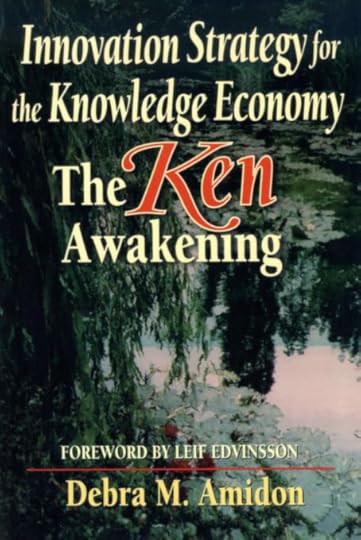
3. Creating the Knowledge-Based Business with David Skyrme
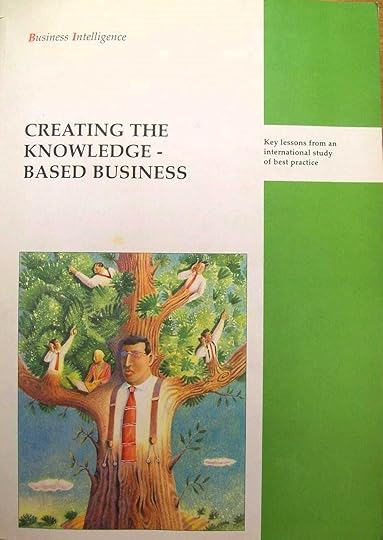
4. Collaborative Innovation and the Knowledge Economy
 Book ChaptersHandbook of Knowledge Management Vol. 1 — Chapter 28: The 7 Cs of Knowledge Leadership — with Doug MacnamaraHandbook of Knowledge Management Vol. 2 — Chapter 47: An Atlas for Knowledge Innovation: Migration from Business Planning — with Darius MahdjoubiNext Generation Knowledge Management — Chapter 5: Architecting Success in the Knowledge Economy; Chapter 6: Characteristics of Laggards and Leaders[image error]
Book ChaptersHandbook of Knowledge Management Vol. 1 — Chapter 28: The 7 Cs of Knowledge Leadership — with Doug MacnamaraHandbook of Knowledge Management Vol. 2 — Chapter 47: An Atlas for Knowledge Innovation: Migration from Business Planning — with Darius MahdjoubiNext Generation Knowledge Management — Chapter 5: Architecting Success in the Knowledge Economy; Chapter 6: Characteristics of Laggards and Leaders[image error]
August 9, 2024
Knowledge Management Thought Leader 81: David Gurteen
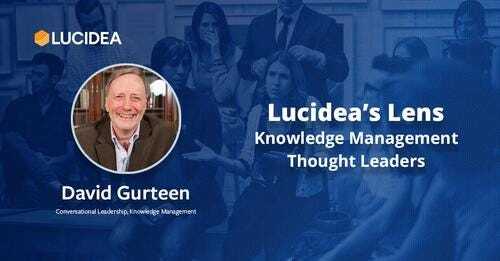
David Gurteen is Director of Gurteen Knowledge. He is a writer, speaker, and conversational facilitator, working in knowledge management, organizational learning, and conversational leadership.
David is the founder of the Gurteen Knowledge Community, a global network of more than 22,000 people in over 160 countries whose purpose is to connect its members with like-minded people, new ideas, and alternative ways of working. He is the creator of the Gurteen Knowledge Café, a tool for bringing people together to have meaningful conversations.
David curates Gurteen Knowledge, a resource website that contains book reviews, articles, people profiles, event calendars, inspirational quotations, and a blog on subjects that include knowledge management, informal learning, creativity, and innovation. He is an advocate for improving the quality of conversation in people’s lives.

For more about David, see Profiles in Knowledge.
Books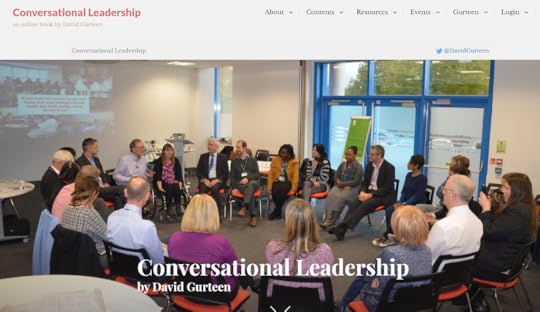
 The Relationship between Explicit Knowledge and Tacit Knowledge
The Relationship between Explicit Knowledge and Tacit KnowledgeHere are a few reasons why explicit knowledge always has a tacit component:
Contextual understanding: Explicit knowledge is often presented concisely and formally, but its interpretation and application require a deeper understanding of the context in which it was developed. This contextual understanding, which involves tacit knowledge about the field, the cultural and historical background, and the underlying assumptions, is essential for fully comprehending and utilizing explicit knowledge.Personal experience and intuition: Even when dealing with explicit knowledge, we bring our personal experiences, intuitions, and practical know-how to the table. This tacit knowledge shapes how we interpret, apply, and make sense of explicit information. For example, a skilled carpenter may follow explicit instructions in a woodworking manual, but their tacit knowledge gained through years of experience allows them to adapt and optimize the processes based on their understanding of materials, tools, and techniques.Interpretation and application: Explicit knowledge is often insufficient for practical application. Interpreting and applying explicit knowledge in specific situations requires tacit knowledge about problem-solving, decision-making, and adapting to changing circumstances. This tacit knowledge is often acquired through experience, mentorship, and learning by doing.Cognitive limitations: We have limitations in articulating and formalizing all aspects of our knowledge. Some forms of knowledge, such as intuitive insights or embodied skills, are challenging to express explicitly and remain largely tacit. This tacit component serves as a foundation for acquiring and utilizing explicit knowledge.Principles of Conversational LeadershipFirst, we need to recognize face-to-face conversation’s extraordinary and underutilized power. It helps us to figure out new ways of seeing the world by bringing different perspectives to bear on an issue. This, in turn, leads to improved decision-making, better strategy-making, and improved innovation.
Second, we need a new approach to leadership. We need a distributed, participatory, more democratic form of leadership. We need everyone who cares deeply about an issue to take responsibility, step up to the mark and lead through their influence.
Conversational Leadership is about appreciating the transformative power of conversation, practicing leadership, and adopting a conversational approach to working together in a complex world. Its principles are:
Take Responsibility: We can choose to take responsibility for the changes we wish to see in the world.Embrace Complexity: We need to understand complexity and its implications.Practice Leadership: We all have influence and the potential to lead and make a difference. Leadership is a choice.Leverage the Power of Conversation: We need to improve our conversational skills.Nurture Community: We need to care more about each other.The differences between the Knowledge Café and the World Café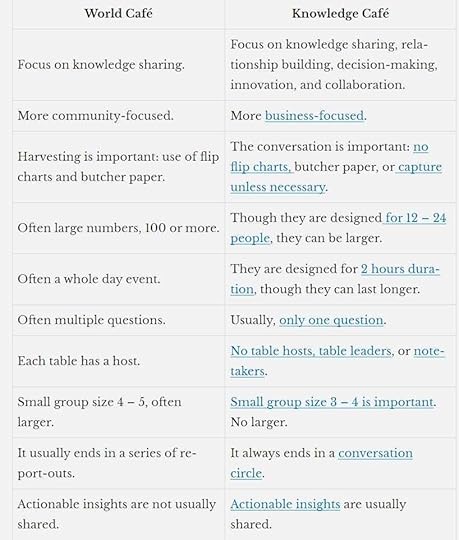 [image error]
[image error]



